
In 1853, the rulers of Japan ended the country’s more than two centuries of isolation from the rest of the world. But while foreigners could now get into Japan for trade and commerce, it would take more than 10 years until Japanese citizens could leave the country, meaning that outside cultural influences were still slow to find their way into the half-opened nation.
As such, there’s a brief, time capsule-like period in which Japan’s culture was still almost entirely of indigenous origins, but foreign visitors had the technology to visually document it, as shown in these beautiful photographs of 19th century Japan.
One of these visitors was Italian-British photographer Felice Beato, whose work we’ve looked at before. After moving to Yokohama in the early 1860s, Beato was in a position to travel the country and capture images of it during the final days of the shogunate, which was about to be overthrown in the Boshin War and Meiji Restoration by progressive samurai, such as the members of this group from Satsuma (present-day Kagoshima Prefecture) whom he photographed during the conflict.
Beato didn’t just turn his lens to such violent and tumultuous subject matter, though. Although many traditions of the geisha have been preserved to this day, there was no way to know how long the disciplines of their trade would last in 1865, when the photographer had one of Japan’s classical entertainers pose for the camera.
Taken from much farther back, but no less compelling, is this panorama photo taken in either 1865 or 1866.
You might not recognize it without the help of such world-famous landmarks as the Skytree, Metropolitan Government Building, or RocketNews24 Main Office, but that’s Tokyo.
Well, technically, on the day of the shoot it was still called Edo, in addition to being low-lying enough that Beato’s position atop the modest 25.7-meter (84.3-foot)-high hill called Atagoyama, situated in what’s now Tokyo’s Minato Ward, gave him a vantage point with a view over the entire city.
But while it can’t match the present-day skyline in terms of skyscrapers or blazing neon, you can still get a feeling of Edo’s enormous size, particularly for the era in which the picture was taken. With traditional row houses stretching to the horizon, it’s not too hard to see how it grew into the city with an infinite supply of things to discover that it is today.
And now we find ourselves overcome with the desire to run up to the roof and take a snapshot before it all changes again.
Source, images: Japaaan

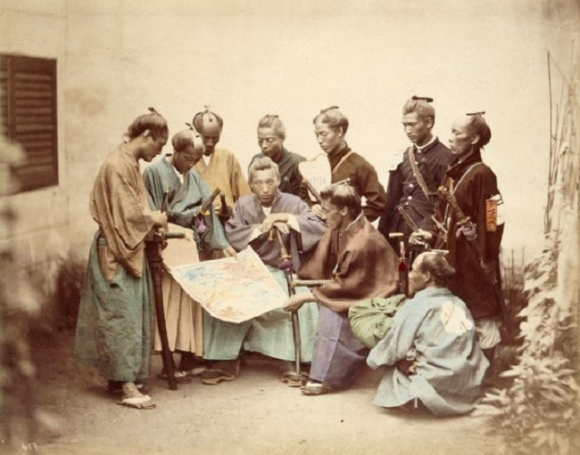
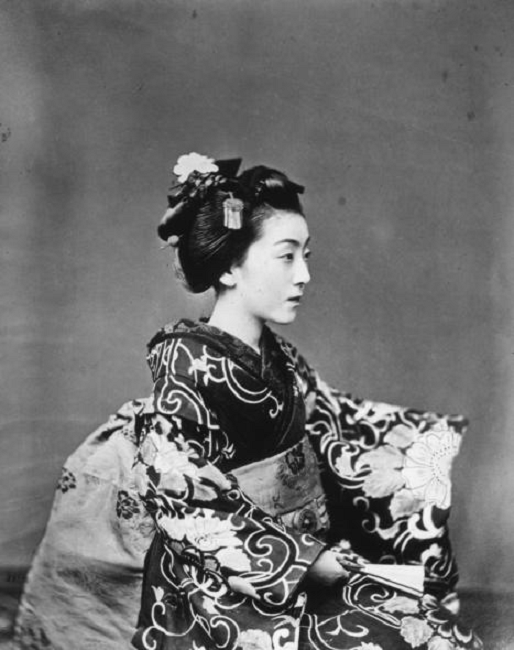

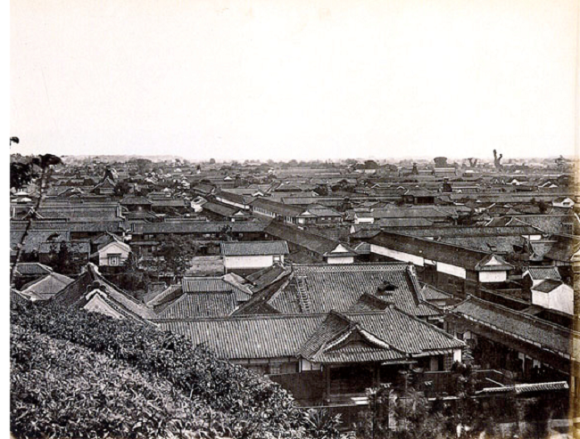
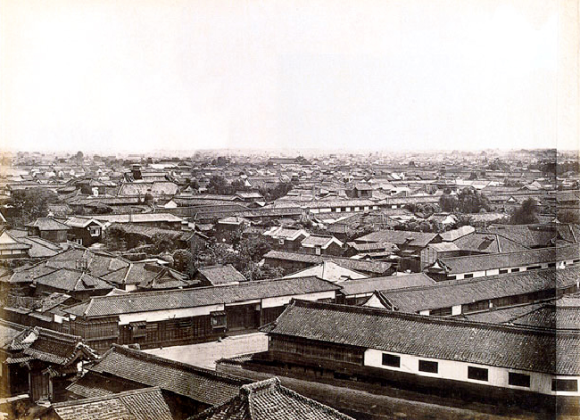
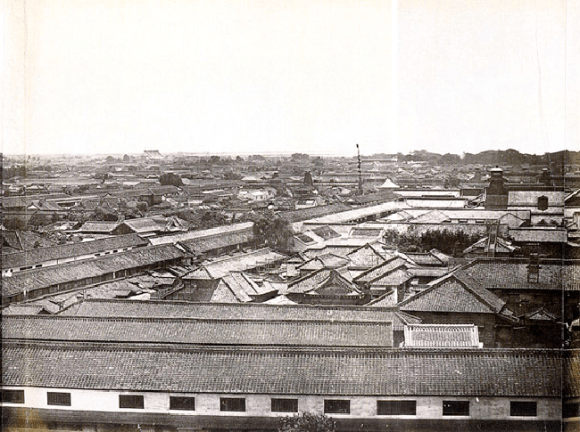
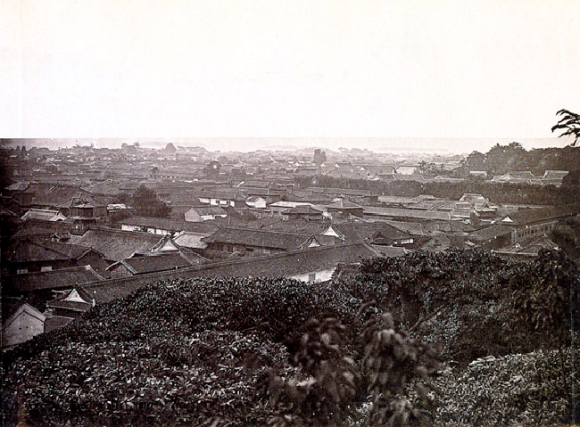
 “Get them drunk then chop off their heads.” Samurai’s assassination plot against U.S. envoys found
“Get them drunk then chop off their heads.” Samurai’s assassination plot against U.S. envoys found Tokyo’s newest sushi restaurant is actually way too Japanese for its own good
Tokyo’s newest sushi restaurant is actually way too Japanese for its own good Tokyo Tower, Skytree don French Tricolour in show of sympathy following Paris terrorist attack
Tokyo Tower, Skytree don French Tricolour in show of sympathy following Paris terrorist attack Women, gamers, and foreigners all show up to be samurai for a day at Sengoku battle reenactment
Women, gamers, and foreigners all show up to be samurai for a day at Sengoku battle reenactment Shogun sweets? Trees said to be planted by first Tokugawa shogun still bear fruit used for sweets
Shogun sweets? Trees said to be planted by first Tokugawa shogun still bear fruit used for sweets Red light district sushi restaurant in Tokyo shows us just how wrong we were about it
Red light district sushi restaurant in Tokyo shows us just how wrong we were about it Historical figures get manga makeovers from artists of Spy x Family, My Hero Academia and more
Historical figures get manga makeovers from artists of Spy x Family, My Hero Academia and more Japan’s massive matcha parfait weighs 6 kilos, contains hidden surprises for anyone who eats it
Japan’s massive matcha parfait weighs 6 kilos, contains hidden surprises for anyone who eats it Beautiful Red and Blue Star luxury trains set to be Japan’s new Hokkaido travel stars
Beautiful Red and Blue Star luxury trains set to be Japan’s new Hokkaido travel stars Akihabara pop-up shop sells goods made by Japanese prison inmates
Akihabara pop-up shop sells goods made by Japanese prison inmates Anime girl English teacher Ellen-sensei becomes VTuber/VVTUber and NFT
Anime girl English teacher Ellen-sensei becomes VTuber/VVTUber and NFT Sandwiches fit for a sumo served up in Osaka【Taste Test】
Sandwiches fit for a sumo served up in Osaka【Taste Test】 McDonald’s new Happy Meals offer up cute and practical Sanrio lifestyle goods
McDonald’s new Happy Meals offer up cute and practical Sanrio lifestyle goods Introducing Roland, King of the Hosts: Top earner and most successful host club host in Tokyo
Introducing Roland, King of the Hosts: Top earner and most successful host club host in Tokyo Japanese ramen restaurants under pressure from new yen banknotes
Japanese ramen restaurants under pressure from new yen banknotes All-you-can-drink Starbucks and amazing views part of Tokyo’s new 170 meter-high sky lounge
All-you-can-drink Starbucks and amazing views part of Tokyo’s new 170 meter-high sky lounge More foreign tourists than ever before in history visited Japan last month
More foreign tourists than ever before in history visited Japan last month French Fries Bread in Tokyo’s Shibuya becomes a hit on social media
French Fries Bread in Tokyo’s Shibuya becomes a hit on social media Studio Ghibli releases new action figures featuring Nausicaä of the Valley of the Wind characters
Studio Ghibli releases new action figures featuring Nausicaä of the Valley of the Wind characters New private rooms on Tokaido Shinkansen change the way we travel from Tokyo to Kyoto
New private rooms on Tokaido Shinkansen change the way we travel from Tokyo to Kyoto Starbucks reopens at Shibuya Scramble Crossing with new look and design concept
Starbucks reopens at Shibuya Scramble Crossing with new look and design concept Studio Ghibli glasses cases let anime characters keep an eye on your spectacles
Studio Ghibli glasses cases let anime characters keep an eye on your spectacles Beautiful Ghibli sealing wax kits let you create accessories and elegant letter decorations【Pics】
Beautiful Ghibli sealing wax kits let you create accessories and elegant letter decorations【Pics】 Studio Ghibli releases Kiki’s Delivery Service chocolate cake pouches in Japan
Studio Ghibli releases Kiki’s Delivery Service chocolate cake pouches in Japan New definition of “Japanese whiskey” goes into effect to prevent fakes from fooling overseas buyers
New definition of “Japanese whiskey” goes into effect to prevent fakes from fooling overseas buyers Our Japanese reporter visits Costco in the U.S., finds super American and very Japanese things
Our Japanese reporter visits Costco in the U.S., finds super American and very Japanese things Studio Ghibli unveils Mother’s Day gift set that captures the love in My Neighbour Totoro
Studio Ghibli unveils Mother’s Day gift set that captures the love in My Neighbour Totoro New Japanese KitKat flavour stars Sanrio characters, including Hello Kitty
New Japanese KitKat flavour stars Sanrio characters, including Hello Kitty New Pokémon cakes let you eat your way through Pikachu and all the Eevee evolutions
New Pokémon cakes let you eat your way through Pikachu and all the Eevee evolutions Disney princesses get official manga makeovers for Manga Princess Cafe opening in Tokyo
Disney princesses get official manga makeovers for Manga Princess Cafe opening in Tokyo Sales of Japan’s most convenient train ticket/shopping payment cards suspended indefinitely
Sales of Japan’s most convenient train ticket/shopping payment cards suspended indefinitely Sold-out Studio Ghibli desktop humidifiers are back so Totoro can help you through the dry season
Sold-out Studio Ghibli desktop humidifiers are back so Totoro can help you through the dry season Japanese government to make first change to romanization spelling rules since the 1950s
Japanese government to make first change to romanization spelling rules since the 1950s Ghibli founders Toshio Suzuki and Hayao Miyazaki contribute to Japanese whisky Totoro label design
Ghibli founders Toshio Suzuki and Hayao Miyazaki contribute to Japanese whisky Totoro label design Doraemon found buried at sea as scene from 1993 anime becomes real life【Photos】
Doraemon found buried at sea as scene from 1993 anime becomes real life【Photos】 Tokyo’s most famous Starbucks is closed
Tokyo’s most famous Starbucks is closed One Piece characters’ nationalities revealed, but fans have mixed opinions
One Piece characters’ nationalities revealed, but fans have mixed opinions We asked a Uniqlo employee what four things we should buy and their suggestions didn’t disappoint
We asked a Uniqlo employee what four things we should buy and their suggestions didn’t disappoint Princesses, fruits, and blacksmiths: Study reveals the 30 most unusual family names in Japan
Princesses, fruits, and blacksmiths: Study reveals the 30 most unusual family names in Japan No, the Tokyo Skytree wasn’t lit in colors of Ukraine for solidarity…but another landmark is
No, the Tokyo Skytree wasn’t lit in colors of Ukraine for solidarity…but another landmark is The depressing diet of a Tokyo prostitute during Japan’s Edo period
The depressing diet of a Tokyo prostitute during Japan’s Edo period Amazing side-by-side images capture a century of change in China【Pics】
Amazing side-by-side images capture a century of change in China【Pics】 Japanese photographer captures the beauty of Tokyo Station in breathtaking image
Japanese photographer captures the beauty of Tokyo Station in breathtaking image Japanese ninja proficiency test to be held in Tokyo
Japanese ninja proficiency test to be held in Tokyo Lightning storm photos of the Skytree show the Tokyo symbol in a whole new light【Photos】
Lightning storm photos of the Skytree show the Tokyo symbol in a whole new light【Photos】 Gray-sky Gundam photo will brighten the hearts of anyone who loves anime or awesomeness
Gray-sky Gundam photo will brighten the hearts of anyone who loves anime or awesomeness Tokyo’s 7 coolest public art pieces
Tokyo’s 7 coolest public art pieces Tokyo Skytree to install VR viewer for rainy days
Tokyo Skytree to install VR viewer for rainy days Pervert hunter arrested by Tokyo police for less-than-pure intentions
Pervert hunter arrested by Tokyo police for less-than-pure intentions “Floating” Mt Fuji and shrine gates capture the hidden beauty of Japan【Photos】
“Floating” Mt Fuji and shrine gates capture the hidden beauty of Japan【Photos】 The top 10 things foreign tourists visiting Japan want to do during Golden Week
The top 10 things foreign tourists visiting Japan want to do during Golden Week
Leave a Reply